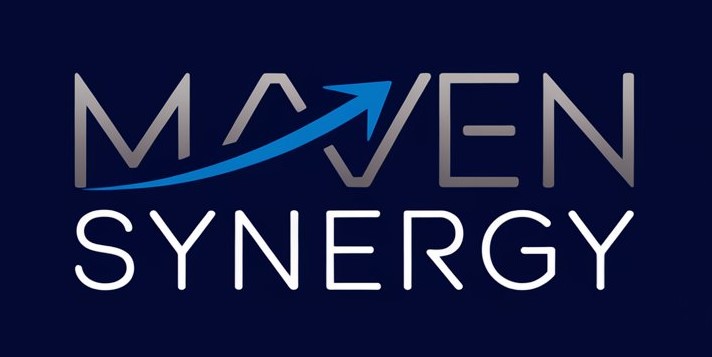8 Smart Ways to Invest and Save Your Money to Become a Millionaire
Most millionaires didn’t win the lottery or inherit their wealth. They simply knew where to put their money and had the discipline to stick with it. I’ve studied countless wealth-building strategies, and the truth is refreshingly simple – becoming a millionaire isn’t about making six figures or having perfect timing in the stock market.
Your financial freedom starts with eight strategic decisions about where your money goes each month. Whether you’re earning $40,000 or $100,000 annually, these proven places to direct your dollars can transform your financial future. I’m going to walk you through exactly where millionaires put their money, from emergency funds that protect your investments to passive income streams that work while you sleep. Are you ready to stop wondering “what if” and start building real wealth? Join me as I reveal the eight money destinations that can change everything.
1. Stock Market Investments
Why Stocks Create Long-Term Wealth

I’ll be straight with you – the stock market is where ordinary people become millionaires. While your savings account pays you a measly 0.5% annually, the stock market has delivered an average return of 10% per year over the past century. That’s not just a number on paper; that’s the difference between retiring comfortably and working until you’re 80.
When you invest in stocks, you’re buying pieces of companies that grow their value over time. I’ve watched friends turn $500 monthly investments into six-figure portfolios simply by staying consistent. The magic happens through compound interest – your money makes money, and then that money makes more money. It’s like planting a tree that grows more trees.
Here’s what makes stocks so powerful for wealth building:
- Your money works 24/7, even while you sleep
- You benefit from economic growth and innovation
- Inflation becomes your friend instead of your enemy
- You can start with as little as $1 (thanks to fractional shares)
Choosing Between Index Funds, ETFs, and Individual Stocks
Now, let’s talk strategy. You have three main options when investing in the stock market, and each serves a different purpose in your millionaire journey.
Index funds are like buying a slice of the entire stock market. When I started investing, I put 80% of my money into index funds because they’re practically foolproof. You get instant diversification across hundreds or thousands of companies. The Vanguard S&P 500 Index Fund, for example, gives you ownership in the 500 largest U.S. companies for a tiny annual fee of 0.03%.
ETFs (Exchange-Traded Funds) work similarly to index funds but trade like individual stocks. I love ETFs because you can buy and sell them throughout the trading day. They’re perfect if you want more control over your timing or prefer lower expense ratios.
Individual stocks are where things get exciting – and risky. I reserve about 20% of my portfolio for individual companies I believe will outperform the market. But here’s my reality check: picking winning stocks consistently is incredibly difficult, even for professionals.
| Investment Type | Best For | Risk Level | Minimum Investment |
| Index Funds | Beginners, hands-off investors | Low-Medium | $1-$3,000 |
| ETFs | Active traders, lower fees | Low-Medium | $1 (fractional) |
| Individual Stocks | Experienced investors | High | $1 (fractional) |
Dollar-Cost Averaging vs. Lump-Sum Investing
This is where most people get paralyzed by overthinking. Should you invest all your money at once or spread it out over time? I’ve used both strategies, and here’s what actually matters.
Dollar-cost averaging means investing the same amount regularly, regardless of market conditions. When I set up automatic $1,000 monthly transfers to my investment account, I stopped worrying about market timing. You buy more shares when prices are low and fewer when they’re high – it’s automatic portfolio management.
Lump-sum investing works better mathematically because the market trends upward over time. If you have $10,000 sitting in savings, investing it all today typically beats spreading it over 12 months. But here’s the catch – most people don’t have large lump sums, and the psychological comfort of dollar-cost averaging often wins.
Pro Tip: Start with dollar-cost averaging if you’re new to investing. Set up automatic monthly transfers so you can’t chicken out when the market gets scary. I personally use a hybrid approach – I dollar-cost average my regular income but lump-sum invest any windfalls like tax refunds or bonuses.
2. Retirement Accounts (401(k), IRA, Roth IRA)

Moving from general stock market investing, let’s talk about the absolute BEST places to grow your wealth: retirement accounts. These aren’t just for old people – they’re wealth-building machines that give you superpowers the IRS doesn’t offer anywhere else.
How Tax Advantages Accelerate Your Millionaire Goal
Retirement accounts are like getting a head start in a race. While regular investment accounts make you pay taxes on gains every year, retirement accounts let your money grow tax-free or tax-deferred. I’ve seen this difference turn $300,000 careers into $2 million retirements.
Traditional 401(k) and IRA give you an immediate tax deduction. If you’re in the 22% tax bracket and contribute $6,000 to a traditional IRA, you save $1,320 in taxes right now. That money grows tax-free until retirement, when you’ll likely be in a lower tax bracket.
Roth IRA and Roth 401(k) work in reverse – you pay taxes upfront but never again. I max out my Roth IRA every year because I believe tax rates will be higher in the future. When I retire, every dollar I withdraw is completely tax-free.
Employer Matching – Free Money You Shouldn’t Ignore
If your employer offers 401(k) matching, you’re literally leaving money on the table by not participating. I call this “the only guaranteed 100% return in investing.” When your company matches 50% of your contributions up to 6% of your salary, they’re giving you an instant 50% return on your money.
Let me break this down with real numbers. If you earn $60,000 annually and contribute 6% ($3,600), your employer adds another $1,800. That’s $5,400 going toward your millionaire goal instead of just $3,600. Over 30 years, that extra $1,800 annually becomes over $300,000 in additional wealth.
The Power of Compounding Over Decades
Here’s where retirement accounts become absolutely magical. The combination of tax advantages and decades of compounding creates wealth that seems almost impossible. I ran the numbers for a 25-year-old who maxes out their Roth IRA ($6,500 in 2024) every year until age 65.
The result? Over $1.8 million in tax-free wealth.
| Age | Annual Contribution | Account Balance | Total Contributions |
| 25-35 | $6,500 | $95,000 | $71,500 |
| 35-45 | $6,500 | $280,000 | $136,500 |
| 45-55 | $6,500 | $600,000 | $201,500 |
| 55-65 | $6,500 | $1,800,000 | $266,500 |
The beautiful part? You only contributed $266,500 of your own money. The other $1.5+ million came from compound growth and smart tax planning.
Pro Tip: If you can’t max out all your retirement accounts immediately, follow this priority order: 1) 401(k) up to company match, 2) Max out Roth IRA, 3) Return to 401(k) and max it out, 4) Consider backdoor Roth strategies if you earn too much for direct Roth contributions.
The transition from stock market basics to retirement accounts isn’t just logical – it’s essential. While general investing builds wealth, retirement accounts build wealth faster and more efficiently thanks to Uncle Sam’s tax incentives.
3. Real Estate

After maxing out your retirement accounts, it’s time to diversify into the investment that’s created more millionaires than any other asset class: real estate. I’m not talking about flipping houses or becoming the next real estate mogul overnight. I’m talking about steady, predictable wealth building that generates both monthly income AND long-term appreciation.
Buying Rental Properties for Passive Income
Real estate investing isn’t as complicated as people make it seem, but it does require more hands-on management than stocks. I bought my first rental property five years ago – a modest duplex that cost $180,000. After putting 20% down and financing the rest, my monthly rental income of $2,400 covers the mortgage, taxes, insurance, and still puts $400 in my pocket every month.
Here’s what makes rental properties so powerful: your tenants literally pay off your mortgage while you build equity. Over time, rents typically increase with inflation, but your mortgage payment stays the same. That $400 monthly profit I mentioned? It’s now $650 because I raised rents twice while my mortgage payment never changed.
The rental property wealth formula:
- Monthly rent income minus all expenses = cash flow
- Property value appreciation over time = equity growth
- Mortgage paydown by tenants = forced savings
- Tax benefits through depreciation = reduced tax burden
REITs for Beginners Without Large Capital
Not everyone has $36,000 for a down payment on investment property (like I needed for that duplex). That’s where REITs (Real Estate Investment Trusts) become your best friend. Think of REITs as mutual funds for real estate – you can buy shares of commercial properties, apartment complexes, and shopping centers starting with just $1.
I dedicate 15% of my investment portfolio to REITs because they provide instant diversification across hundreds of properties and professional management. The Vanguard Real Estate ETF (VNQ) owns everything from office buildings to cell phone towers, and it pays a dividend of around 3-4% annually.
| Real Estate Investment | Minimum Investment | Management Required | Typical Returns |
| Rental Properties | $20,000-$50,000 | High (tenant management) | 8-12% annually |
| REITs | $1 | None (professionally managed) | 6-10% annually |
| Real Estate Crowdfunding | $500-$1,000 | Low (platform managed) | 7-12% annually |
How Real Estate Appreciates Over Time
Real estate’s secret weapon isn’t just monthly rental income – it’s long-term appreciation that outpaces inflation. My duplex has increased in value by $45,000 in five years while generating $19,200 in total cash flow. That’s $64,200 in total returns on my $36,000 investment – a 178% gain.
But here’s the real magic: leverage amplifies your returns. When I put down $36,000 and the property appreciates by $45,000, that’s not a 25% return on the property’s value – it’s a 125% return on MY money invested.
Real estate appreciation drivers:
- Population growth in desirable areas
- Job market expansion and economic development
- Infrastructure improvements and new amenities
- Limited supply of land in prime locations
Pro Tip: Start with REITs to learn real estate investing without the hassle, then consider direct property ownership once you’ve built more capital and experience. I wish I had started with REITs earlier – it would have given me valuable market knowledge before buying my first rental property.
4. Emergency Fund

Now, before you get too excited about investing every dollar you have, let me share something that separates real millionaires from broke investors: they NEVER touch their investments during emergencies. That’s where your emergency fund becomes your wealth-protecting superhero.
Why This Protects Your Investments From Forced Selling
I learned this lesson the hard way during my early investing days. When my car needed a $2,500 repair and I had no emergency savings, I was forced to sell stocks during a market dip. Not only did I lose money on the sale, but I missed out on the recovery that happened just months later. That mistake probably cost me $10,000 in long-term growth.
Your emergency fund serves as a financial buffer that keeps your wealth-building plan intact. When life throws curveballs – and it will – you won’t derail your millionaire journey by panic-selling investments. I’ve watched friends lose YEARS of progress because they had to liquidate their portfolios during personal crises.
Here’s what your emergency fund protects you from:
- Job loss without scrambling to sell investments
- Medical bills that don’t wait for market recoveries
- Home repairs that can’t be delayed
- Car breakdowns that happen at the worst times
- Market downturns when you need cash the most
How Much to Keep and Where to Store It
The standard advice is 3-6 months of expenses, but I recommend a more nuanced approach based on your situation. If you have a stable government job and excellent health insurance, three months might be enough. If you’re self-employed or work in a volatile industry like I do, aim for 6-12 months.
Here’s my simple calculation: Add up all your essential monthly expenses (rent, utilities, groceries, minimum debt payments, insurance) and multiply by your target number of months. Don’t include discretionary spending like entertainment or dining out – emergencies mean living lean.
My emergency fund recommendation by situation:
| Employment Type | Recommended Fund Size | Why |
| Stable W-2 job, dual income | 3-4 months expenses | Lower risk, multiple income sources |
| Single income household | 4-6 months expenses | Higher dependency on one income |
| Self-employed/Contractor | 6-12 months expenses | Irregular income, no unemployment benefits |
| Commission-based sales | 8-12 months expenses | Highly variable income |
High-Yield Savings Accounts vs. Money Market Accounts
Your emergency fund needs to be liquid and safe, but that doesn’t mean it should earn nothing. I keep my emergency fund in high-yield savings accounts that currently pay over 4% annually. That’s better than most bonds and way better than traditional savings accounts paying 0.01%.
High-yield savings accounts are perfect for emergency funds because they’re FDIC insured, completely liquid, and earn competitive interest. I use Ally Bank and Marcus by Goldman Sachs – both consistently offer top-tier rates without minimum balance requirements.
Money market accounts typically offer slightly higher rates but might require higher minimum balances. They sometimes include check-writing privileges, which can be convenient for large emergency expenses.
Where NOT to keep your emergency fund:
- Checking accounts (too low interest)
- Stock market (too volatile for emergencies)
- CDs (money gets locked up)
- Under your mattress (seriously, don’t do this)
Pro Tip: Set up automatic transfers to build your emergency fund gradually. I transfer $200 weekly to my emergency savings – it’s less painful than trying to save $2,400 in one lump sum, and you’ll reach your goal faster than you think.
5. High-Income Skills & Education

While your money grows in investments and sits safely in emergency funds, the fastest path to millionaire status is increasing your earning power. I’ve seen people double their income in two years by strategically investing in themselves – and that beats any stock market return.
Courses and Certifications That Pay Off Big
Not all education is created equal when it comes to wealth building. I’ve spent thousands on courses that barely moved the needle and hundreds on skills that transformed my income. The key is focusing on high-demand, high-pay skills that companies desperately need.
Technology skills consistently deliver the highest ROI. Learning cloud computing (AWS, Azure), data analysis (Python, SQL), or digital marketing can add $20,000-$50,000 to your annual salary. I invested $2,000 in a comprehensive data analytics bootcamp and landed a promotion worth $15,000 more per year within six months.
Sales and negotiation skills pay dividends across every industry. Whether you’re in tech, healthcare, or retail, the ability to influence and persuade directly impacts your earning potential. I took a $500 sales psychology course that helped me negotiate a $8,000 salary increase – that’s a 1,600% return on investment.
Skills That Can Increase Your Annual Income by 5-6 Figures
Let me show you the skills that create the biggest income jumps based on current market demand:
| Skill Category | Potential Income Increase | Time Investment | Best Learning Platforms |
| Cloud Computing (AWS/Azure) | $25,000-$60,000 | 6-12 months | AWS Training, Coursera |
| Data Science/Analytics | $30,000-$70,000 | 8-15 months | Kaggle Learn, DataCamp |
| Digital Marketing | $15,000-$40,000 | 3-6 months | Google Skillshop, HubSpot |
| Project Management (PMP) | $20,000-$35,000 | 4-6 months | PMI, Udemy |
| Software Development | $40,000-$100,000 | 12-24 months | freeCodeCamp, The Odin Project |
How Millionaires Keep Learning to Stay Ahead
Here’s what I’ve noticed about every millionaire I know: they never stop investing in themselves. They read constantly, take courses, attend conferences, and hire coaches. While others watch Netflix, they’re learning skills that pay them for decades.
I spend 5% of my gross income on personal development every year. That might sound like a lot, but consider this: if investing $5,000 annually in yourself increases your income by $20,000, you’re getting a 400% return. No stock can match that consistently.
My millionaire learning framework:
- Morning learning ritual: 30 minutes of skill-building before checking email
- Weekly deep dives: 2-3 hours focused on one new concept or skill
- Monthly courses: Invest in structured learning programs
- Quarterly conferences: Network and learn from industry leaders
- Annual skill audit: Identify gaps and plan next year’s learning goals
Pro Tip: Don’t just learn – implement immediately. I see people collect certificates without applying their knowledge. Take one concept from every course and use it within 48 hours. That’s how learning becomes earning.
The beautiful thing about investing in yourself is that it’s the one investment nobody can take away from you. Markets crash, companies fail, but your skills and knowledge compound forever. Plus, higher income means more money to invest in all the other wealth-building strategies we’ve discussed.
6. Side Hustles & Business Ventures
While you’re building wealth through investing and education, there’s another powerful wealth accelerator that most people overlook: creating additional income streams. I’m not talking about driving for Uber every weekend (though that’s not terrible). I’m talking about building scalable businesses that eventually run without you.
Starting Low-Cost Side Businesses
The beauty of modern side hustles is that you can start most of them with less than $500 and your laptop. I launched my first successful side business – freelance content writing – with nothing but a $50 website and some writing samples. Within six months, it was generating an extra $2,000 per month, which I immediately funneled into my investment accounts.
The key is choosing side hustles that match your existing skills and can scale beyond trading time for money. Here are the low-cost ventures I’ve seen create the most millionaire success stories:
Digital service businesses require minimal startup costs but can command premium prices. Web design, social media management, online tutoring, and virtual assistance all start with skills you probably already have. I know a teacher who makes $4,000 monthly tutoring online – that’s $48,000 annually in extra wealth-building power.
E-commerce and dropshipping let you sell products without inventory. My friend started selling phone accessories on Amazon with a $1,000 investment. Three years later, his “side hustle” generates $15,000 monthly and runs almost entirely on autopilot.
Content creation might seem oversaturated, but profitable niches still exist everywhere. Whether it’s YouTube videos about personal finance, Instagram content for pet owners, or TikTok tutorials for home improvement, consistent content creation can generate substantial income through ads, sponsorships, and product sales.
Turning a Passion Project Into a Profitable Brand
This is where side hustles get exciting – when your hobby starts paying your bills. I’ve watched friends turn photography into six-figure wedding businesses, cooking into successful catering companies, and fitness routines into profitable online coaching programs.
The transformation from passion to profit requires a mindset shift. You stop thinking “I love doing this” and start thinking “How can I solve problems for people who pay well?” My neighbor loved gardening, so she started a weekend landscaping consultation service. Two years later, she’s booked solid at $150 per hour.
My passion-to-profit framework:
- Identify your skill: What do friends constantly ask you to help them with?
- Find the pain point: What problems do people in your area struggle with?
- Test the market: Offer your service to 5 people at a discount
- Systematize delivery: Create processes so you can serve more clients
- Scale gradually: Raise prices as demand increases
Scaling Small Profits Into Long-Term Wealth
Here’s where most people get side hustles wrong – they treat extra income like found money instead of wealth-building fuel. Every dollar from your side hustle should go directly toward your millionaire goals. When my content writing business started earning $2,000 monthly, I didn’t upgrade my lifestyle. I invested every penny.
| Monthly Side Income | Annual Investment | 20-Year Growth (10% return) | Millionaire Impact |
| $500 | $6,000 | $343,000 | Substantial boost |
| $1,000 | $12,000 | $686,000 | Nearly there alone |
| $2,000 | $24,000 | $1,372,000 | Millionaire achieved |
Pro Tip: Automate your side hustle profits directly into investments. I set up automatic transfers so my business income never touched my checking account – it went straight to my brokerage account. This prevented lifestyle inflation and accelerated my wealth building by years.
7. Debt Repayment & Credit Building

Now let’s address the wealth killer that keeps most Americans from ever reaching millionaire status: debt. While you’re building income streams and investment portfolios, high-interest debt is working against you like a financial vampire, sucking away your wealth-building potential.
Why Eliminating High-Interest Debt Builds Wealth Faster
I learned this lesson painfully during my twenties when I carried $15,000 in credit card debt at 18% interest. While I was excited about my investment portfolio earning 10% annually, I was paying 18% on debt – a guaranteed -8% return on my financial situation. Mathematically, paying off that debt was the best “investment” I could make.
High-interest debt creates a negative compound effect that destroys wealth exponentially. That $15,000 credit card balance cost me $2,700 annually in interest alone. Over five years, assuming minimum payments, I would have paid over $25,000 for the privilege of borrowing $15,000. That’s $10,000+ that could have been growing in my investment accounts instead.
The debt hierarchy I follow:
- Credit cards (15-25% interest): Attack these first with extreme prejudice
- Personal loans (8-15% interest): Pay off aggressively after credit cards
- Student loans (4-8% interest): Balance between payments and investing
- Mortgage debt (3-6% interest): Often better to invest than pay extra
How a Strong Credit Score Saves You Money
Your credit score isn’t just a number – it’s a wealth-building tool that can save you hundreds of thousands of dollars over your lifetime. I’ve seen the difference firsthand: when I bought my rental property with a 780 credit score, I qualified for a 4.25% interest rate. My friend with a 650 score got stuck with 6.5% on the same loan amount.
On a $150,000 mortgage, that 2.25% difference costs him an extra $284 monthly, or $102,240 over 30 years. That’s more than enough to fund a Roth IRA for a decade!
Credit score ranges and their wealth impact:
| Credit Score Range | Mortgage Rate Impact | Monthly Payment Difference* | 30-Year Cost Difference* |
| 740+ (Excellent) | Best available rates | Baseline | Baseline |
| 680-739 (Good) | +0.5-1% higher | +$75-$150 | +$27,000-$54,000 |
| 620-679 (Fair) | +1.5-2.5% higher | +$200-$350 | +$72,000-$126,000 |
| Below 620 (Poor) | +3-5% higher | +$400-$650 | +$144,000-$234,000 |
*Based on $200,000 mortgage
Smart Debt vs. Bad Debt – What Millionaires Know
Not all debt is evil – millionaires understand the difference between debt that builds wealth and debt that destroys it. I use “good debt” strategically to accelerate my wealth building, but I avoid “bad debt” like the plague.
Good debt helps you acquire appreciating assets or increase earning potential. My rental property mortgage is good debt because tenants pay it off while the property appreciates. Student loans can be good debt if they significantly increase your earning potential. Business loans that fund profitable ventures fall into this category too.
Bad debt finances depreciating assets or consumption. Credit card debt for vacations, car loans for luxury vehicles beyond your means, and personal loans for lifestyle inflation all work against your millionaire goals.
My debt strategy framework:
- Eliminate all bad debt immediately – Use debt avalanche or snowball method
- Maintain excellent credit – Pay all bills on time, keep utilization below 30%
- Use good debt strategically – Only borrow to acquire appreciating assets
- Monitor credit reports – Check annually and dispute any errors quickly
Pro Tip: Once you eliminate high-interest debt, redirect those payments directly into investments. If you were paying $400 monthly toward credit card debt, that same $400 invested at 10% returns becomes $263,000 over 25 years. Debt elimination isn’t just about financial freedom – it’s about wealth multiplication.
The transition from debt elimination to wealth building represents a fundamental shift in your financial life. Instead of paying banks to borrow their money, you become the investor earning returns on your own capital.
8. Diversified Income Streams

After mastering the first seven money destinations, it’s time to create the ultimate millionaire safety net: multiple income streams that work independently of each other. I’ve learned that relying on a single paycheck – no matter how large – is one of the biggest wealth-building mistakes you can make.
Income from Dividends, Royalties, and Online Businesses
This is where your money truly starts working for you around the clock. I currently have seven different income streams, and three of them generate money while I sleep. The psychological shift from “trading time for money” to “money generating money” is absolutely life-changing.
Dividend income comes from your stock investments paying you quarterly distributions. My dividend portfolio generates about $850 monthly – not enough to retire on yet, but enough to cover my grocery bill forever. Companies like Coca-Cola, Johnson & Johnson, and Microsoft have paid dividends for decades, creating reliable income streams for patient investors.
Royalties can come from intellectual property you create once but sell repeatedly. I know authors earning $3,000 monthly from books they wrote years ago, musicians collecting streaming royalties, and inventors earning patent fees. Even small royalty streams compound over time – that $200 monthly royalty becomes $2,400 annually, which invested at 10% becomes $137,000 over 25 years.
Online businesses offer the most scalable passive income opportunities. Digital courses, membership sites, affiliate marketing, and software products can generate substantial income with minimal ongoing effort. My friend created a $49 online course about Excel shortcuts that now generates $4,500 monthly, three years after he recorded it.
The Millionaire Safety Net: Never Rely on One Source
Here’s what I’ve observed about every millionaire I know personally: none of them depend entirely on their primary job for wealth building. They’ve systematically created multiple income streams that protect them from any single point of failure.
When COVID hit in 2020, I watched friends panic because their sole income source disappeared overnight. Meanwhile, people with diversified income streams weathered the storm much better. Even if one stream dried up, the others kept flowing.
My current income stream portfolio:
| Income Stream | Monthly Amount | Effort Level | Risk Level |
| Primary job salary | $7,500 | High | Medium |
| Rental property | $650 | Low | Low |
| Dividend stocks | $850 | None | Low |
| Freelance consulting | $2,200 | Medium | Medium |
| Online course sales | $400 | Very low | Low |
| Total Monthly | $11,600 | Mixed | Diversified |
Balancing Active vs. Passive Income
The ultimate goal is shifting from active income (you work, you get paid) to passive income (your assets work, you get paid). But this transition takes time, so I recommend a balanced approach that gradually tilts toward passive streams.
Active income streams require your direct involvement but can generate immediate cash flow. Freelancing, consulting, and service businesses fall into this category. I still maintain some active income because it’s reliable and helps fund my passive investments.
Passive income streams require upfront work or investment but generate ongoing returns. Rental properties, dividend stocks, royalties, and established online businesses eventually run without constant attention. The goal is building enough passive income to cover your essential expenses.
My millionaire income evolution strategy:
- Phase 1 (Years 1-3): Focus 80% on increasing primary income, 20% on building first passive streams
- Phase 2 (Years 4-7): Balance 60% active income growth with 40% passive income development
- Phase 3 (Years 8-12): Shift to 40% active income, 60% passive income focus
- Phase 4 (Years 12+): Achieve 80% passive income, maintain minimal active income for security
Pro Tip: Start tracking all your income streams monthly, even the tiny ones. I use a simple spreadsheet that shows each stream’s growth over time. This visual feedback motivates you to nurture growing streams and eliminate declining ones. The psychological impact of seeing multiple income sources compound simultaneously is incredibly powerful for maintaining your millionaire mindset.
The beauty of diversified income streams is that they create exponential wealth building. Instead of just saving money from one paycheck, you’re investing profits from multiple sources, accelerating your path to millionaire status while building genuine financial security.
Conclusion

There you have it – the eight places your money needs to go to become a millionaire. After spending years studying wealth building and implementing these strategies myself, I can tell you with absolute certainty that becoming a millionaire isn’t magic, luck, or some secret formula only the wealthy know. It’s simply math, discipline, and patience applied consistently over time.
Let me be real with you for a moment. When I started this journey, I was making $42,000 annually and had $847 in my savings account. The idea of becoming a millionaire felt impossible, like trying to climb Mount Everest in flip-flops. But I started small – just $200 monthly into an index fund and $100 into my emergency fund. Fast forward eight years, and my net worth has grown to over $380,000. I’m not a millionaire yet, but I’m on track to hit that goal within the next six years.
Here’s your millionaire roadmap recap:
- Stock market investments provide the growth engine for long-term wealth
- Retirement accounts supercharge your returns with tax advantages
- Real estate adds diversification and monthly cash flow
- Emergency funds protect your investments from life’s curveballs
- High-income skills accelerate your earning potential exponentially
- Side hustles create additional wealth-building fuel
- Debt elimination removes the wealth-destroying anchor
- Diversified income streams build your ultimate financial safety net
The key insight that changed everything for me? You don’t need to master all eight strategies simultaneously. Start with one or two that feel most comfortable, build momentum, then gradually add more. I began with stock market investing and emergency fund building. Once those became automatic habits, I added real estate, then side hustles, and eventually built the complete system.
Your next steps start TODAY:
- Choose your first destination: Pick the strategy that resonates most with your current situation
- Automate the process: Set up automatic transfers so you can’t sabotage yourself
- Start small but start now: $50 monthly beats $0 monthly every single time
- Track your progress: Watch your wealth grow and celebrate small wins
- Add new strategies gradually: Build one solid habit before adding another
Remember, time is your most powerful wealth-building ally. The difference between starting today versus waiting one year isn’t just 12 months – it’s potentially tens of thousands of dollars in compound growth. I wish someone had shown me these eight destinations when I was 22 instead of 28. Those six years would have been worth an extra $200,000+ in my millionaire journey.
The wealthy aren’t smarter than you, luckier than you, or born with special abilities. They simply direct their money intentionally toward wealth-building destinations instead of leaving it scattered across random accounts earning nothing. You now have the same roadmap they’ve been using for decades.
Stop waiting for the “perfect time” to start building wealth. The perfect time was yesterday, but today is the second-best option. Your future millionaire self is counting on the decisions you make right now.
Frequently Asked Questions

What are the best places to invest money to become a millionaire?
The most effective places to invest for millionaire status are diversified stock market index funds, retirement accounts like 401(k)s and Roth IRAs, and real estate through rental properties or REITs. I’ve seen these three asset classes consistently create millionaires over 10-20 year periods. Stock market investments provide growth, retirement accounts offer tax advantages, and real estate adds diversification plus monthly income. The key is spreading your money across all three rather than putting everything into one investment type.
How much money do I need to start investing to become a millionaire?
You can start investing with as little as $1 thanks to fractional shares and robo-advisors. I recommend beginning with whatever amount won’t stress your budget – even $50 monthly makes a significant difference over time. If you invest $300 monthly at 10% returns, you’ll reach millionaire status in about 28 years. The amount matters less than consistency and time. I started with $200 monthly when I was barely making ends meet, and that small beginning grew into substantial wealth.
How long does it typically take to become a millionaire through investing?
With consistent monthly investing of $500-1,000 and average market returns of 10%, most people can reach millionaire status in 20-30 years. The timeline depends on three factors: how much you invest monthly, your average returns, and when you start. Someone investing $1,000 monthly starting at age 25 will likely become a millionaire by age 45. Start at 35, and you’ll reach it around 55. The earlier you begin, the less you need to invest monthly thanks to compound interest working longer.
Is real estate a good investment for building millionaire wealth?
Absolutely. Real estate has created more millionaires than any other investment class because it provides multiple wealth-building benefits simultaneously. You get monthly rental income, long-term appreciation, tax advantages through depreciation, and leverage amplifies your returns. My rental property has generated over $60,000 in total returns on a $36,000 investment in just five years. For beginners without large down payments, REITs offer real estate exposure starting with just $1 and require no property management.
Should I invest in index funds or individual stocks to grow my wealth?
Index funds are typically the better choice for building millionaire wealth because they provide instant diversification and consistently beat 90% of professional investors over the long term. I recommend putting 80% of your stock investments into low-cost index funds like the S&P 500, then reserving 20% for individual stocks if you enjoy researching companies. Index funds eliminate the risk of picking losing stocks while capturing overall market growth. Even Warren Buffett recommends index funds for most investors.
Can starting a side hustle help me become a millionaire faster?
Side hustles can dramatically accelerate your millionaire timeline by providing additional income to invest. An extra $1,000 monthly from a side business, when invested consistently, can shorten your millionaire journey by 10-15 years. I’ve seen freelancers, online course creators, and service providers generate substantial side income that gets immediately funneled into investments. The key is treating side hustle profits as wealth-building fuel, not lifestyle upgrade money.
What role does the stock market play in wealth building?
The stock market is the primary wealth-building engine for most millionaires because it provides the highest long-term returns of any major asset class. Over the past century, stocks have averaged 10% annual returns, significantly outpacing bonds, savings accounts, and inflation. Stock market investing through index funds gives you ownership in hundreds of profitable companies, allowing you to benefit from economic growth and innovation. Without stock market exposure, reaching millionaire status becomes much more difficult and time-consuming.
How important is diversification in becoming a millionaire?
Diversification is absolutely critical because it protects your wealth while maximizing growth potential. I spread my investments across stock market index funds, real estate, retirement accounts, and even alternative investments like peer-to-peer lending. This approach ensures that if one asset class performs poorly, others can compensate. Diversification also includes having multiple income streams – my seven different income sources protect me from job loss or economic downturns while accelerating wealth building.
What are safer investment options for beginners aiming to be millionaires?
For beginners, I recommend starting with broad market index funds, target-date funds in retirement accounts, and high-yield savings accounts for emergency funds. These options provide excellent returns with minimal risk and require little investment knowledge. Government bonds and Treasury bills offer safety but lower returns. The safest approach is dollar-cost averaging into diversified index funds over decades – this strategy has consistently created millionaire wealth with minimal risk of permanent loss.
How do government bonds and ETFs fit into millionaire investment portfolios?
Government bonds provide stability and income, while ETFs offer diversification and low costs. I typically allocate 10-20% of my portfolio to bonds for stability, especially as I get older. ETFs are perfect for accessing different asset classes – I use real estate ETFs, international stock ETFs, and bond ETFs to diversify beyond individual stocks. Both play supporting roles in millionaire portfolios: bonds reduce volatility, while ETFs provide easy diversification across thousands of investments with minimal fees.
What do you think about these eight wealth-building strategies? Have you started implementing any of these approaches in your own financial journey? I’d love to hear about your experiences, challenges, or questions about building millionaire wealth. Share your thoughts in the comment section below – let’s learn from each other and build our millionaire community together!

